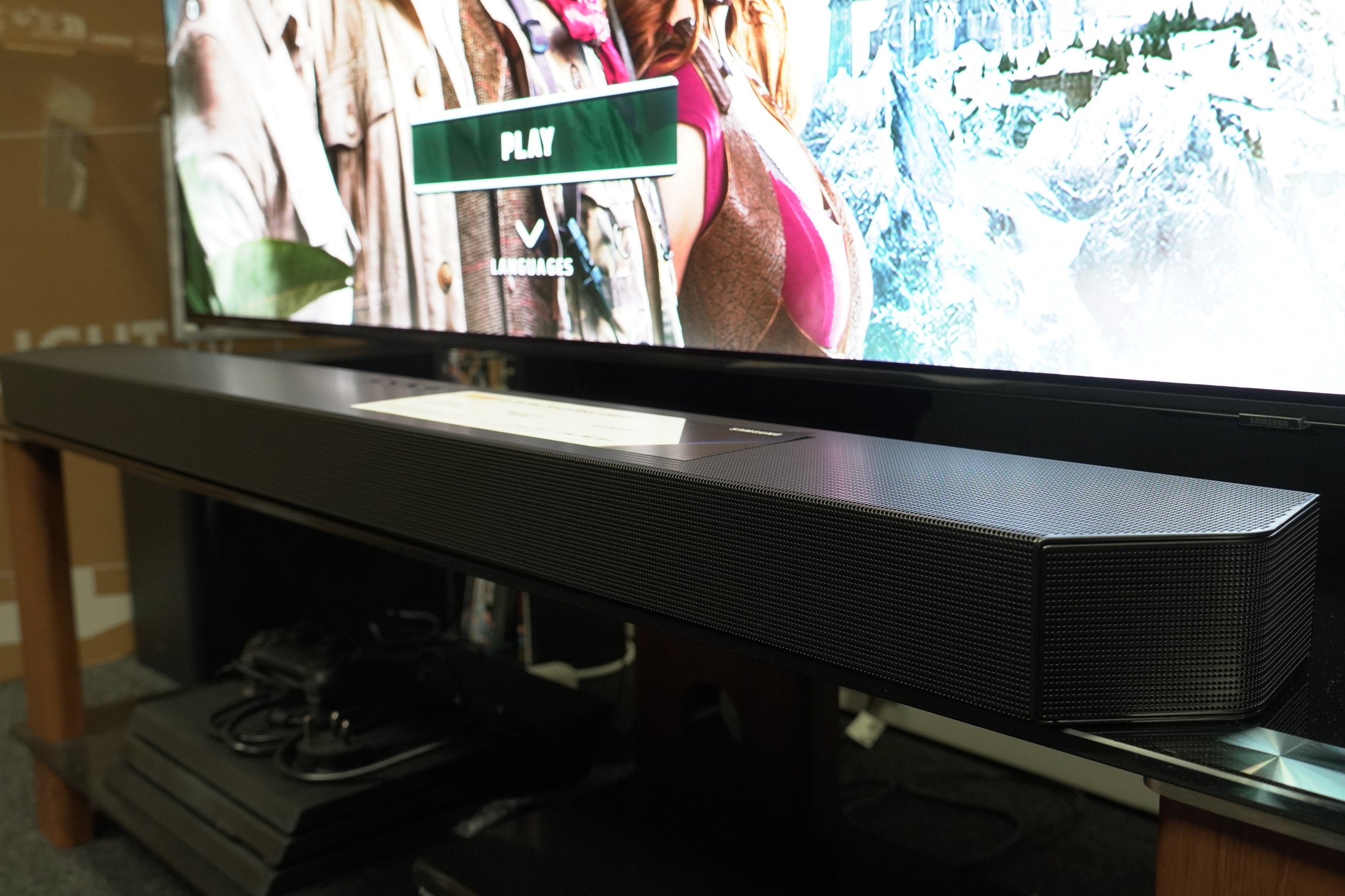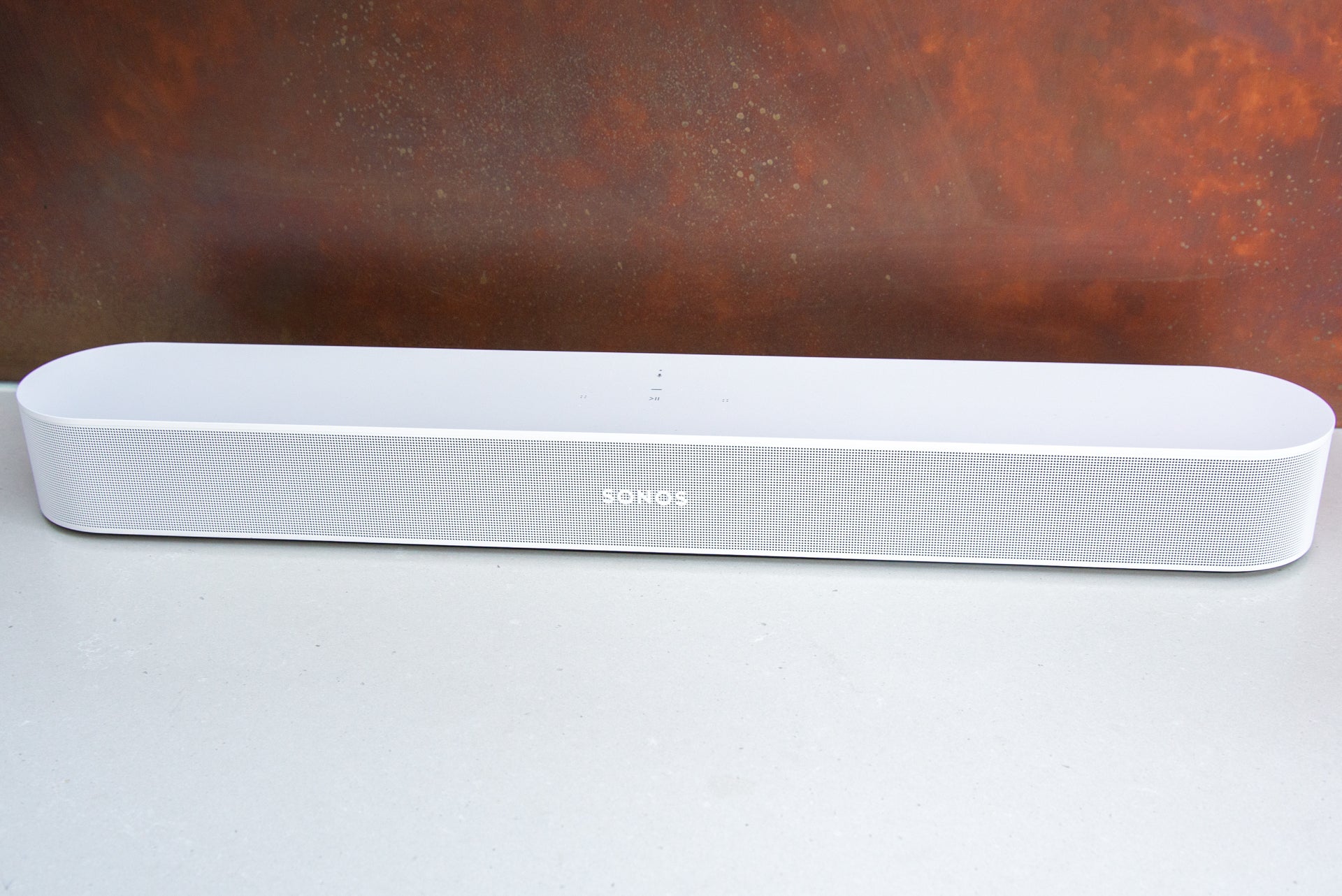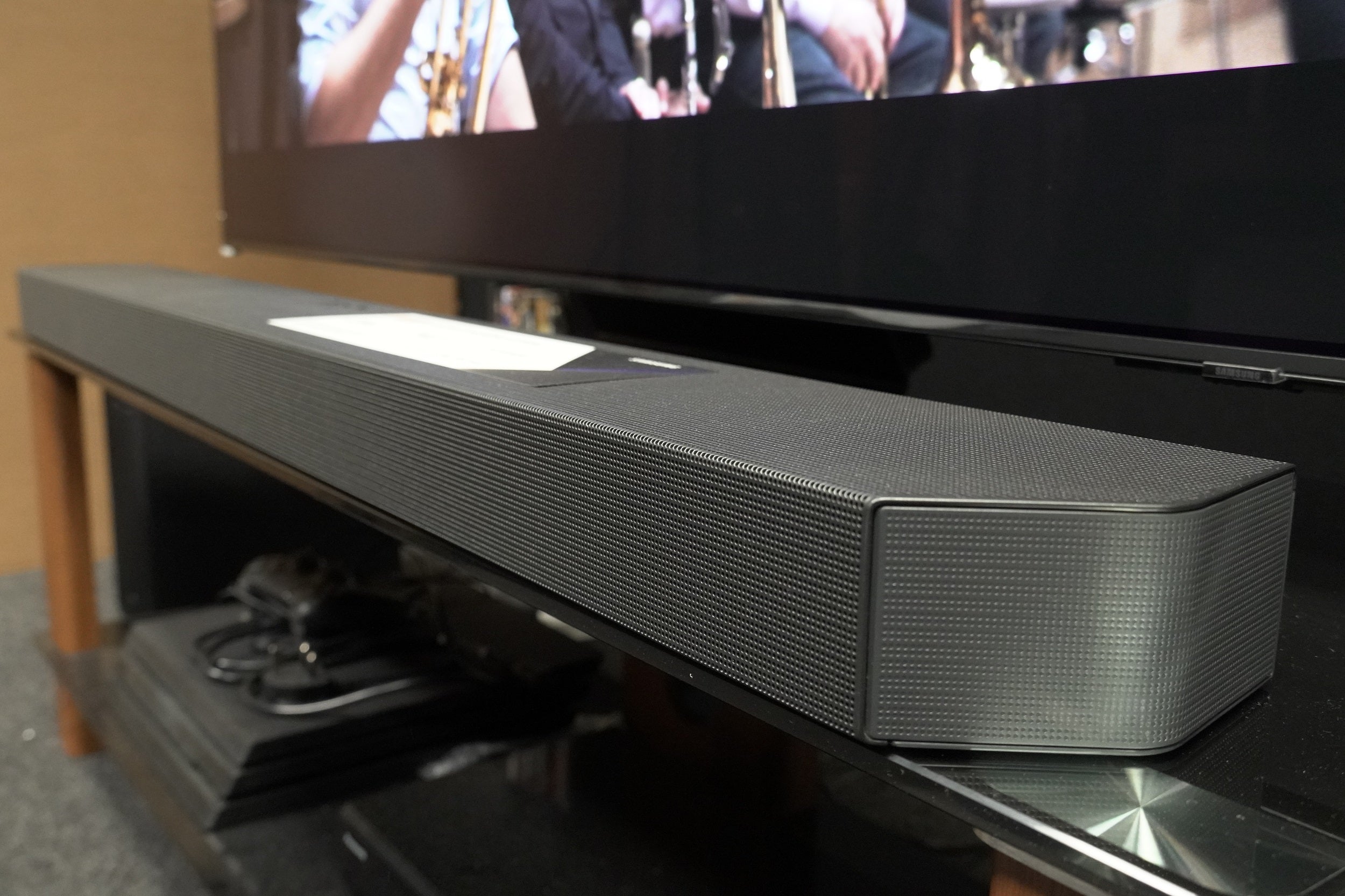Bowers and Wilkins Panorama 3 Review
A high quality single-box Atmos bar from B&W
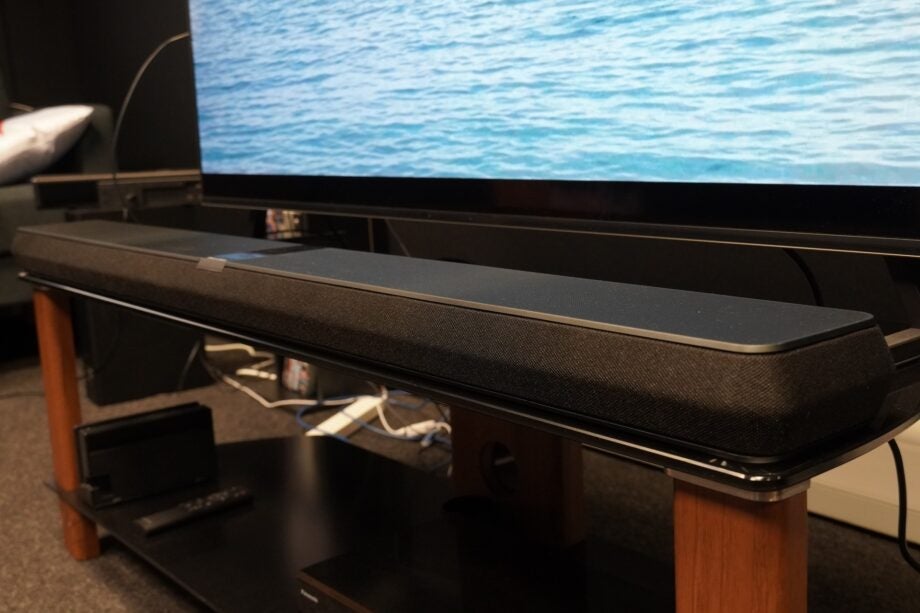

Verdict
Bowers & Wilkins’ entry into the Atmos fray with the Panorama 3 is a largely impressive effort, delivering plenty of naturalism with films, TV and music. It has its faults, lacks a few features that home cinema enthusiasts would enjoy, and it can be temperamental. However, as a streaming Atmos soundbar, there’s much to admire and enjoy.
Pros
- Impressively detailed and spacious performance
- Sharp and clear delivery of music
- Sleek, slim looks
- Slick Music companion app
Cons
- Lacks consistency with dialogue
- No DTS support
- No HDMI inputs
- No upgrade path for adding speakers
Availability
- UKRRP: £899
- USARRP: $999
- EuropeRRP: €999
Key Features
- Voice assistant supportBuilt-in voice assistance from Alexa
- Music streamingCan stream music via Spotify Connect, AirPlay 2 and aptX Bluetooth
- Bowers & Wilkins Music appCan stream music services such as Tidal and Qobuz via app
Introduction
The last soundbar we saw from esteemed British audio brand Bowers & Wilkins was the Formation Bar, and while that looked great and sounded fantastic, it came at a time when the soundbar market was in its courtship of Atmos, its arrival seemed to push against the prevailing winds.
But with the Panorama 3, B&W has the Atmos winds in its sails, and like its recent Zeppelin wireless speaker, the latest Panorama has a streaming focus, presenting itself as a high-end lifestyle bar.
The single-box Atmos market has grown in popularity, the likes of Sonos, Bose, Harman Kardon and Bang & Olufsen just a few names to have a go. Where does Bowers & Wilkins Panorama 3 fit in?
Design
- Pared-down look compared to older models
- Slim enough to slot beneath TV
- Elegant appearance
Sleek, slim and slender are all apt words to describe the Panorama 3. Compared to previous Panorama bars, the latest model is “less” rather than “more”: the sculpted look pared down; the height trimmed down by almost half; and the bar has gone on a diet, from 14.5kg to 6.5kg. This allows it to be more easily accommodated – a soundbar that actively wants to slip by unnoticed.
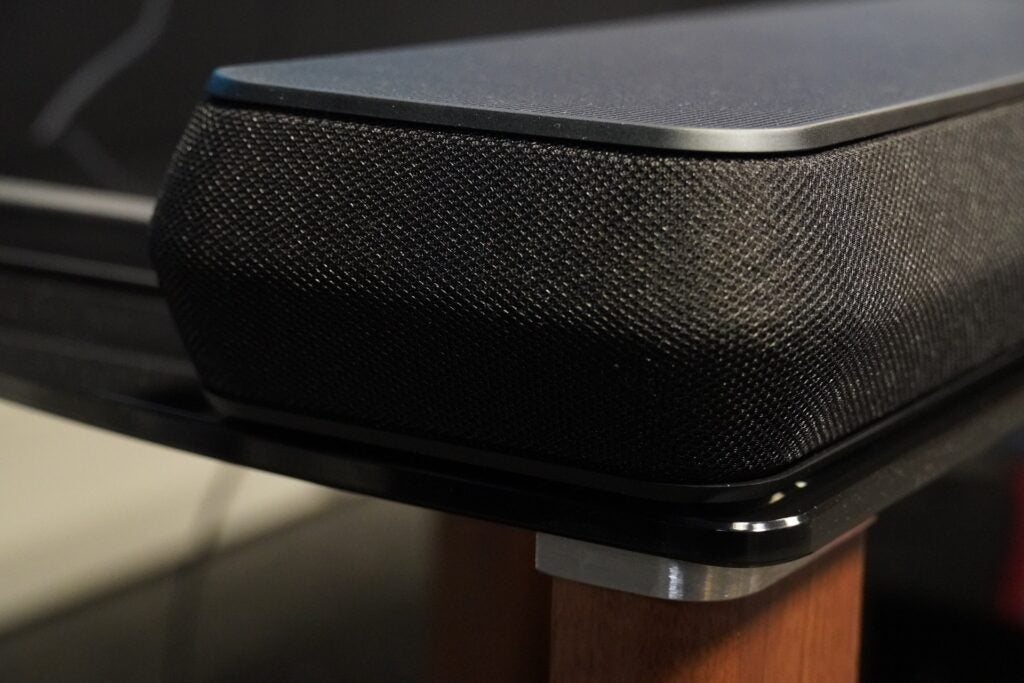
Although its elegant appearance means you’ll likely admire it from the vantage point of your sofa, the contoured edges of the enclosure giving it a subtly angular look, the shape of which is intended to optimise its delivery as it pushes sound forward, above and out to the sides.
As is commonplace for any premium soundbar, there’s a chic acoustic fabric that wraparounds its midriff, while on the top surface there’s an acoustically transparent mesh to push sound out. There’s a minimalist touchscreen interface in the middle, which springs to life when its proximity sensors detect your presence. This is a classy, well-made affair.
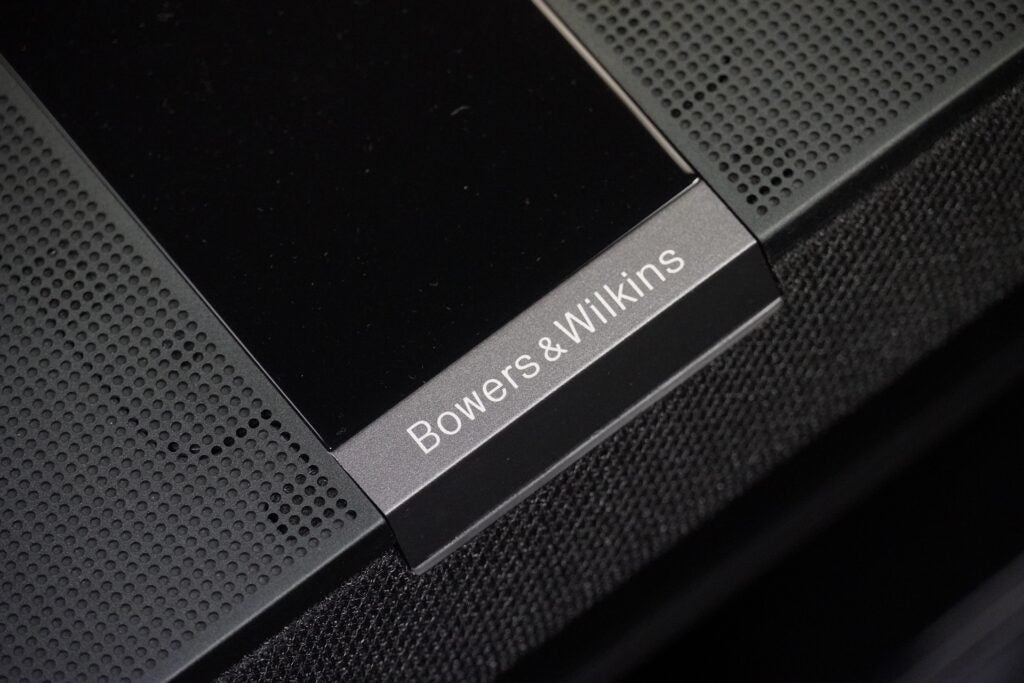
The display reveals the playback, volume, multifunction (cycling through sources and streams) and voice assistant buttons. Since the display is top-facing, and only for the purpose of operating the bar when you’re up and about (the Panorama 3 doesn’t ship with a remote), there’s no traditional display to feed info such as soundtrack details or menu settings. Although Bowers & Wilkins would likely say its Music app fulfils those wants.
In a recessed area around the rear sit the connections, while, if you choose to, the soundbar can be wall-mounted with the packaged bracket. The Panorama 3 is only available in black, which only reasserts its attempt not to be noticed.
Features
- Only one HDMI port
- Supports music streaming services via app
- Alexa voice assistant integration
I mentioned connections earlier, and it’s here that the Panorama 3 proves a downgrade on previous models. There’s one HDMI (eARC) input, optical digital, Ethernet for wired internet and service connection USB-C. In contrast, the Panorama 2 featured optical/aux, three HDMI inputs and one output, plus a sub out.
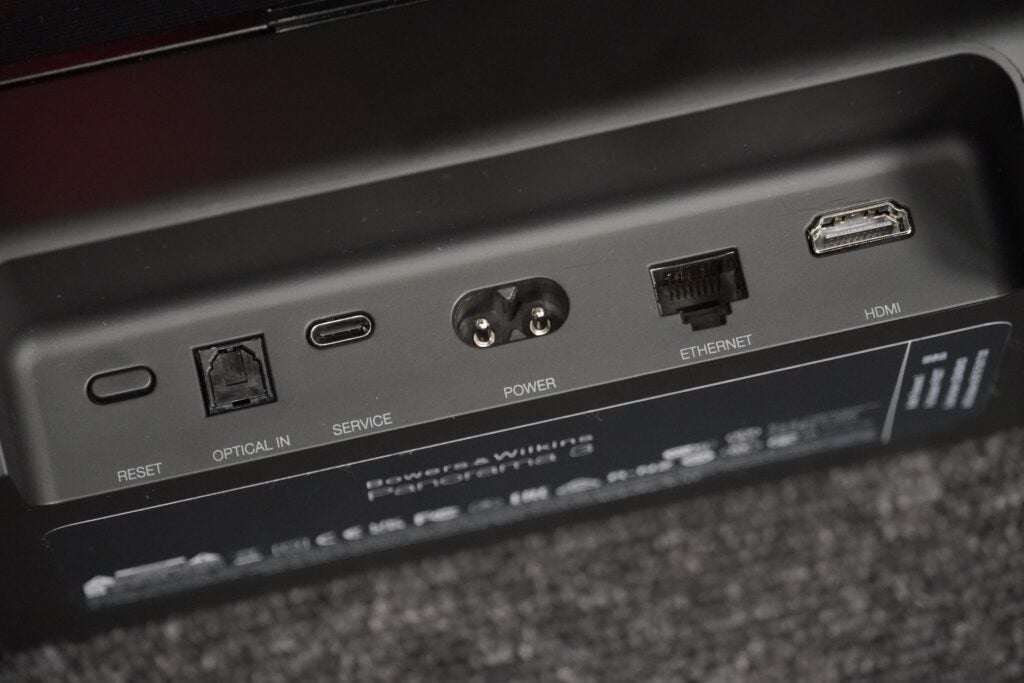
While B&W will preach simplicity for having a single HDMI port, far cheaper Atmos bars offer a HDMI input; Sony’s HT-A7000 features two, as does Samsung’s HW-Q900A. The Panorama 3’s frugality won’t be helpful for those with plenty of sources to plug in.
Like it did with the Zeppelin, the B&W bar fully embraces the wireless life. Spotify Connect, Apple’s AirPlay 2 and aptX Adaptive Bluetooth are onboard, and with the Bowers & Wilkins Music app, you have access to a host of integrated music streaming services such as Tidal, Soundcloud, Qobuz, Deezer, Last.fm and TuneIn.
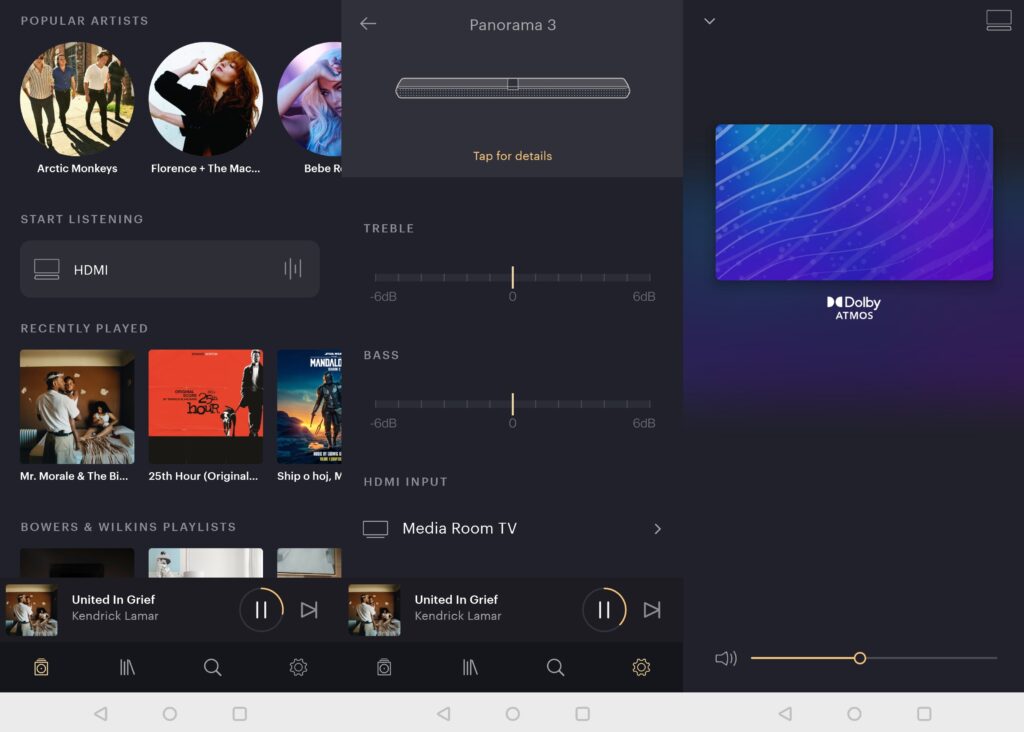
There’s no option of Chromecast, though; but app integration with Tidal and Qobuz gets past having to cast those services. The B&W app doesn’t show the bit-rate/resolution songs play in, however. Tidal is lossless but not Master quality, while Qobuz is up to 24-bit/96kHz.
There’s a tinge of disappointment with soundtrack support, too. There’s Dolby Atmos, and the Panorama 3 can accept lossless TrueHD or lossy Digital+ variants from 4K Blu-rays and video streaming services alike. What it can’t deal with is DTS, receiving LPCM instead.
Inside the enclosure are 13 individual driver units arranged in a 3.1.2 configuration. That’s three 19mm Titanium dome tweeters, fully decoupled from the cabinet to avoid high-frequency distortion. The six forward-facing 50mm woven glass-fiber cone bass/mid-range units are twinned together in left, centre and right positions. Atmos elevation units are covered by two 50mm woven glass-fiber drivers, while low frequencies are provided by two 100mm low-profile bass units.
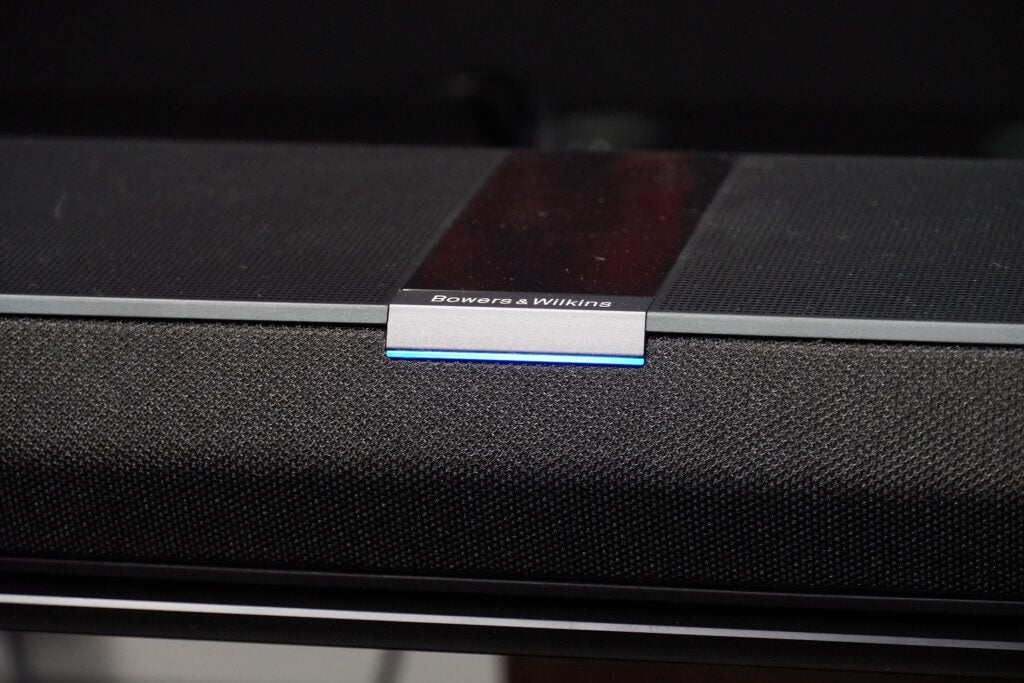
Alexa is built in and an Amazon account can be linked to the B&W Music app. The bar’s mics can pick up my voice even when something is playing at high volume, and Alexa will deal with requests or playing music from Spotify in no time – although playback from Tidal with Alexa is unsupported.
The app is a slick companion, with a neatly organised interface and simple EQ customisation possible by amending bass and treble. It’s bothersome that changing bass/treble applies to all sources, so amend it for films and it will skew music playback, too, and the same holds true for volume levels. There are no sound modes to choose from in the app.
Like the Zeppelin wireless speaker, the Panorama 3 has a digital “brain” that can be upgraded. Multi-room support is planned, which will allow it to speak to other Panoramas, Zeppelins and Formation products.
Sound Quality
- Sharp, clear and detailed Atmos sound
- Punchy bass, but limited extension
- Impressive naturalism
- Balance can falter with dialogue in energetic scenes
It would be easy to get caught up in the Panorama 3’s marketing, especially when it mentions being “the most immersive, most convincing spatial audio ever heard from a sound bar.” One-box Atmos bars have their limitations, but the Panorama 3 makes a convincing argument to be considered among the best-sounding models of its ilk.
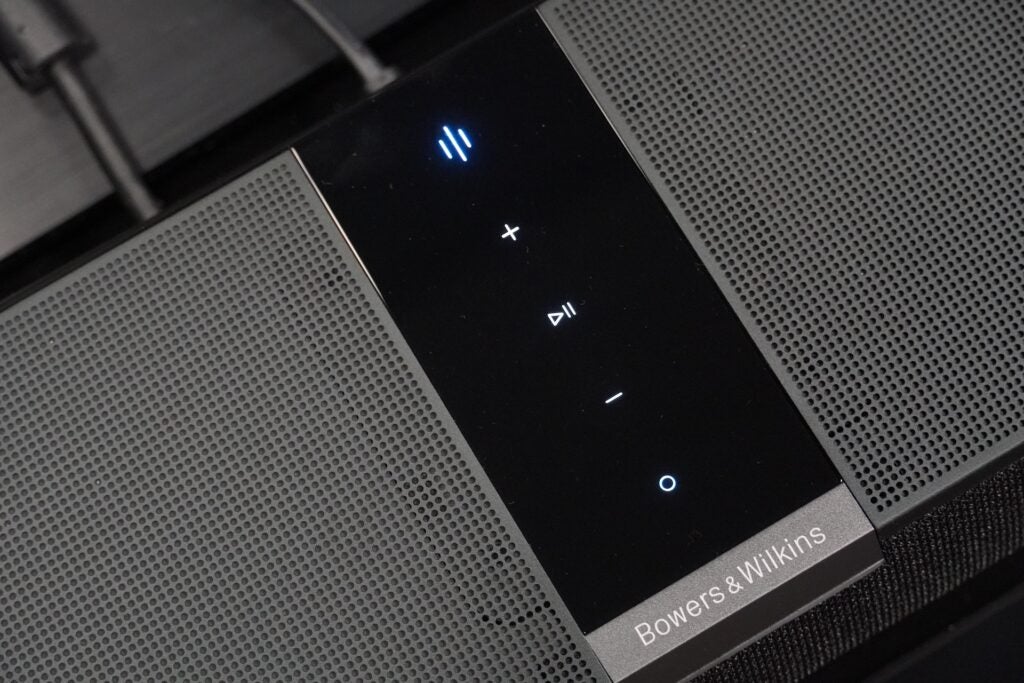
One limitation, or compromise, is that this isn’t strictly “true” Atmos. True Atmos relies on surround speakers to create a hemisphere of sound, and the Panorama 3 bears no upgrade path for adding additional speakers, making this a front-heavy effort where soundtracks don’t wrap around the listener. I’d have thought the Formation Flex would have been useful in this instance as a rear gunner.
Nevertheless, the Panorama 3 delivers a spacious, wide and detailed sound. Tonally it’s crisp and sharp, not too dissimilar to the HT-A7000, and it helps the B&W extract every scrap of detail – from the minute to the most impactful. There’s a slight difference between Atmos tracks on streaming vs 4K Blu-ray, a little less sharpness and detail noticeable when comparing the lossy Disney+ version of Star Wars: The Force Awakens to the lossless 4K Blu-ray.
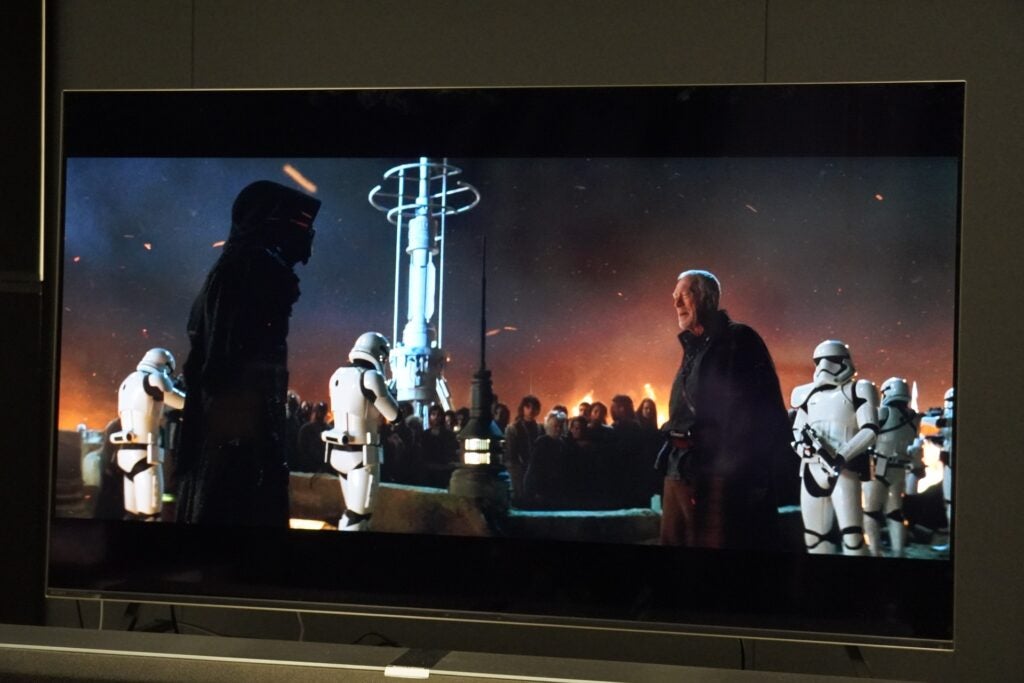
In general, though, the way it goes about its business is with tremendous force of energy, but also plenty of subtlety. In The Force Awakens, explosive sequences such as the escape from Jakku, or when the Resistance comes to the rescue after Maz Kanata’s cantina is attacked, are conveyed with an intensity that accentuates the spectacle on-screen in a vivid way.
Poe Dameron’s X-wing swoops from the sky, the bar creating a broad three-dimensional sense of space as he zooms towards and away from the listener, shooting down Tie Fighter after Tie Fighter. Activity in the height channels convinces, full of explosions and the sound of lasers pulsing across the sky. The degree to which the bar pushes sound above, and the energy it conveys, is mightily impressive.
The bar’s levels of sharpness help in terms of definition, but its crisp tone can have an untoward impact on dialogue. In Netflix’s The Dig, the broadcast of Britain’s decision to enter World War II over a radio is sharp to the point where it becomes slightly unintelligible. Compared to the Devialet Dione, the latter’s smoothness enunciates dialogue better.
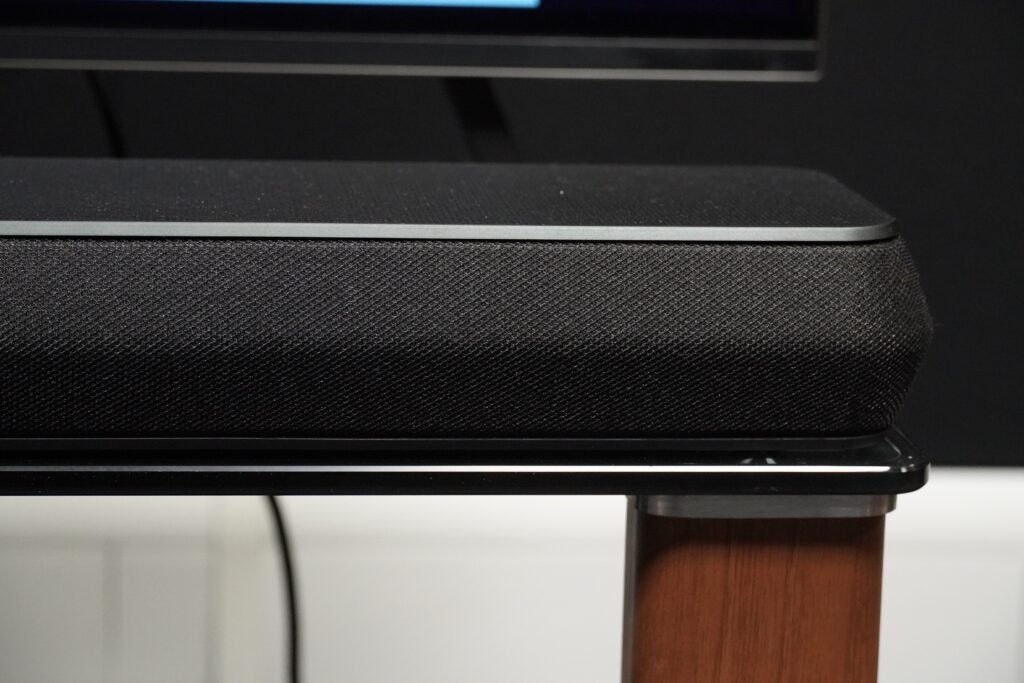
A few more moments where dialogue falters is in Tenet, where Kat unhooks Sator’s line to a catamaran, flinging him into the sea. The delivery of Kat’s “burn in hell, Andre” can sound unintelligible on some systems, and it isn’t clearly delivered on the B&W (but is on the Dione).
In Dune, where Jessica recites the Litany of Fear as Paul goes through the gom jabbar ritual, the soundbar is so caught up in the energy and power of Hans Zimmer’s score, that her dialogue becomes hard to hear. It may be a quirk of how dialogue was mixed; but in louder, more intense scenes, the Panorama 3 struggles to carve out a clear space for dialogue to comfortably exist.
While dialogue falters on occasion, the Panorama 3 utterly convinces with its naturalism. The moment in The Dig where Edith Pretty and Basil Brown are bundled into a car to escape the mob of the press genuinely sounds chaotic – as it should. The clamour of reporters described as a noisy rabble is truer than the Devialet’s smoother, flatter approach, even if dialogue detail between Pretty and Brown is hampered.
The ambience of scenes and the subtle details it picks up on make for an immersive soundscape. The embers in the air as Kylo Ren lands on Jakku place you within the scene right away. In a Croatia-based episode from Conversations with Friends (iPlayer), the sound of crickets on the soundtrack produces the same effect, as does the sound of spice in the air as the Atreides touch down on Arrakis, almost transporting the viewer to Dune itself. The Bowers & Wilkins’ Panorama 3 delivers subtlety along with excitement, eliciting lots of detail and nuance from quieter scenes in a wholly natural manner.
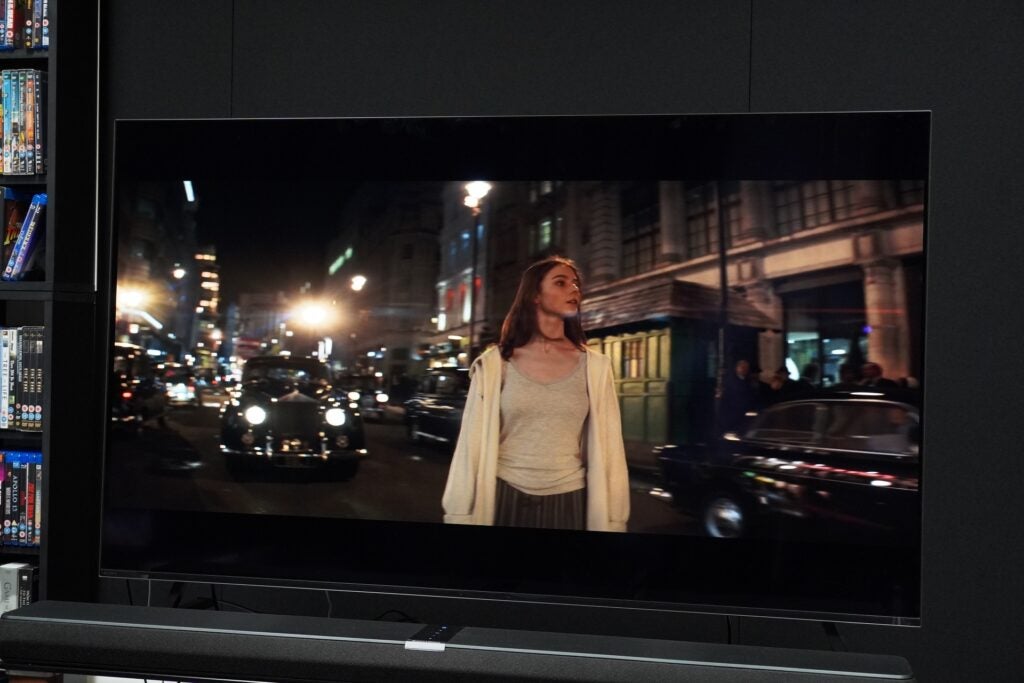
The crisp tone allows it to go from quiet to loud like a high-performance sports car goes from 0-60; the moment where Eloise travels back to 1960s London for the first time in Last Night in Soho sells the entry into a different world with gusto as the soundtrack opens up in scale and dynamics. The effects and dialogue in a number of films and TV I watched were placed beyond the boundaries of the screen and bar, as soundtracks are given space to breathe.
But where there’s a positive, there’s a drawback. The low-frequency effects from films such as Mother!, V for Vendetta and Blade Runner 2049 have plenty of punch, but not much depth or extension, sounding on the shallow and flat side. The destruction of the Old Bailey in V for Vendetta doesn’t have the same heft as the HT-A7000, nor does the fight between K and Sapper Morton feature the same weight and ferocity as the Dione can showcase.
However, while watching music-based films such as A Star is Born, the concert performances sound electric. The crisp tone helps with the definition of guitars, drums and the vocals of Lady Gaga and Bradley Cooper, the sense of space and dynamism giving it a realistic feel.
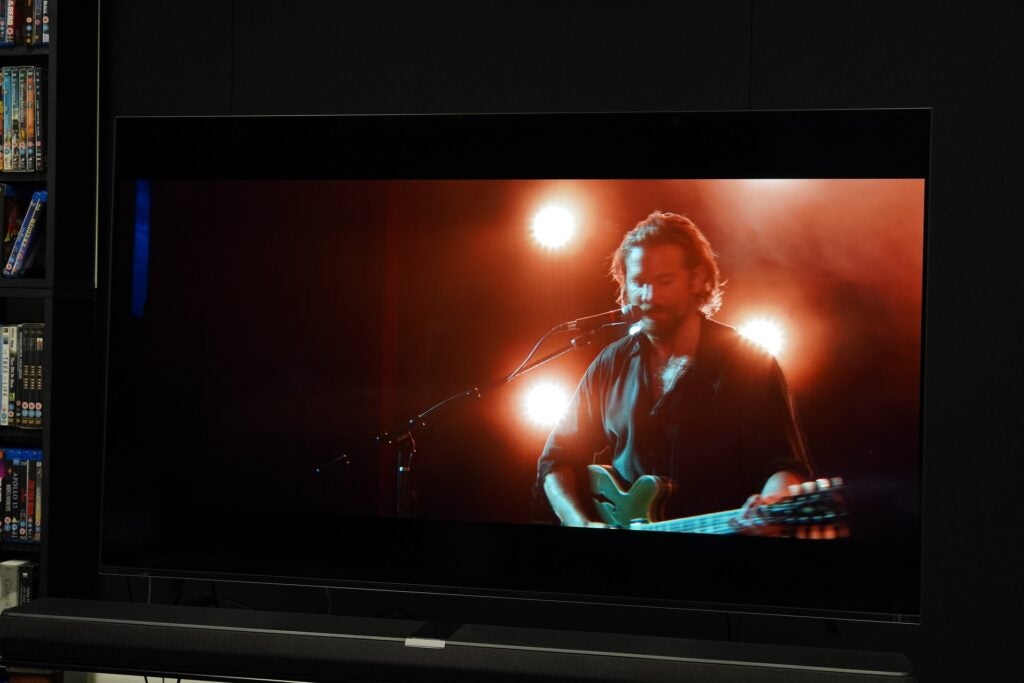
There are some temperamental issues to contend with, though. There’s the lack of compatibility with DTS tracks, plus there can also be some weird buzzing for no apparent reason, and not just in films themselves but popping up on the menus of Blu-rays. While that was infrequent, more frequent were the audible pops and shrieks when scanning a disc, and sometimes audio cut out completely when used with a Sony A80J OLED. Perhaps it’s just this sample.
Music playback takes on similar qualities to movies: crisp and lean in tone. Takuya Kuroda’s Fade (feat. Corey King) is played back with plenty of energy and clarity, vocals avoiding sibilance. The sharpness of high frequencies makes the bar an expressive and defined performer. Turn it up and the Panorama 3 can make a din.
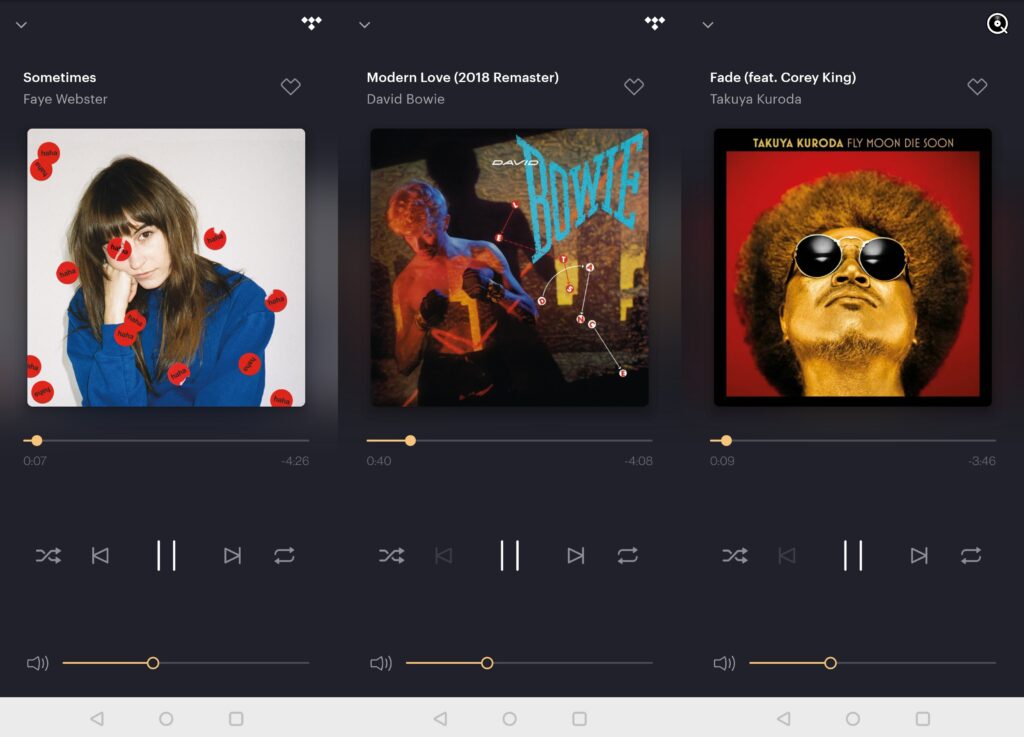
And it’s a dab hand with slower songs, too, such as Faye Webster’s Sometimes, the mid-range treated with excellent clarity and neutrality. The bar reveals lots of detail from the cymbal crashes to the gentle guitar in the background.
With David Bowie’s Modern Love there’s more of its lean, energetic attack; but as is the case with films, the Panorama 3 could take more care with elevating voices above the fray. Bluetooth playback is noticeably smoother, although not as wide in its soundstage, or as sharp and attacking. Nevertheless, it’s still better than most soundbars I’ve listened to recently.
Latest deals
Should you buy it?
For its impressive Atmos sound For less than £1000, the Panorama 3 puts in a energetic and spacious performance that brings Hollywood films to life with impressive fidelity. If you can’t spare the space for a surround system, or don’t want one, this is one of the more distinguished Atmos performers on the market.
Won’t fully appeal to home cinema enthusiasts The Panorama 3 has lifestyle streaming soundbar daubed all over it, with its lack of DTS support, no HDMI inputs and no upgrade path for adding more speakers. The latter feels like a missed opportunity.
Final Thoughts
The name Panorama harks back to the “Golden age” era of Hollywood (not the BBC TV show), a mix of Panavision and Cinerama – although both are visual technologies, which is odd now that I think about it. Still, I can see what B&W is going for, especially in this Dolby Atmos age, as the Panorama 3 offers a panoramic sound performance.
It’s a convincing step into the realm of object-based audio for the company, delivering excitement and subtlety to bring films and TV shows to life. It can be just as incisive and clear-eyed with music – and with the Bowers & Wilkins app, there’s plenty of ways to turn it into a capable music system.
The Panorama 3 does have its quirks, however. Its temperamental side (at least with this sample) makes a regular appearance; the lack of DTS support/HDMI inputs will disappoint home cinema enthusiasts; and, despite the positives I’ve given it for its sound, dialogue clarity is an area for improvement. Still, the Panorama 3 is a great sounding Atmos bar wrapped in a lovely packaging, and one of the more impressive efforts available for under £1000.
How we test
We test every soundbar we review thoroughly over an extended period of time. We use industry standard tests to compare features properly. We’ll always tell you what we find. We never, ever, accept money to review a product.
Find out more about how we test in our ethics policy.
Tested for a month
Tested with a range of movies and TV
FAQs
No, the Bowers & Wilkins app doesn’t support Tidal Masters (it’s currently at 16-bit lossless), but an update is expected to add MQA support later in the year.
There’s no Night mode or sound modes in general to choose from, with only bass and treble adjustment available through the app.



